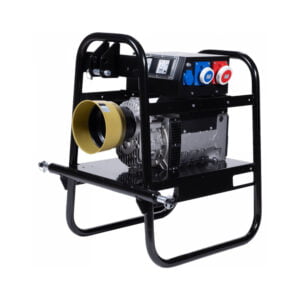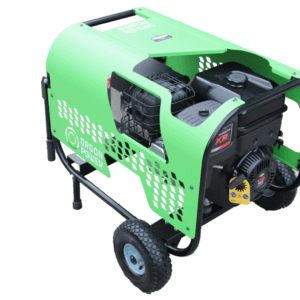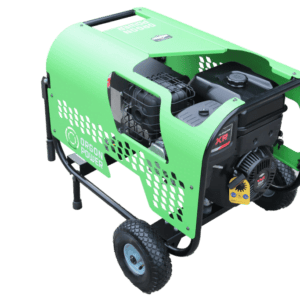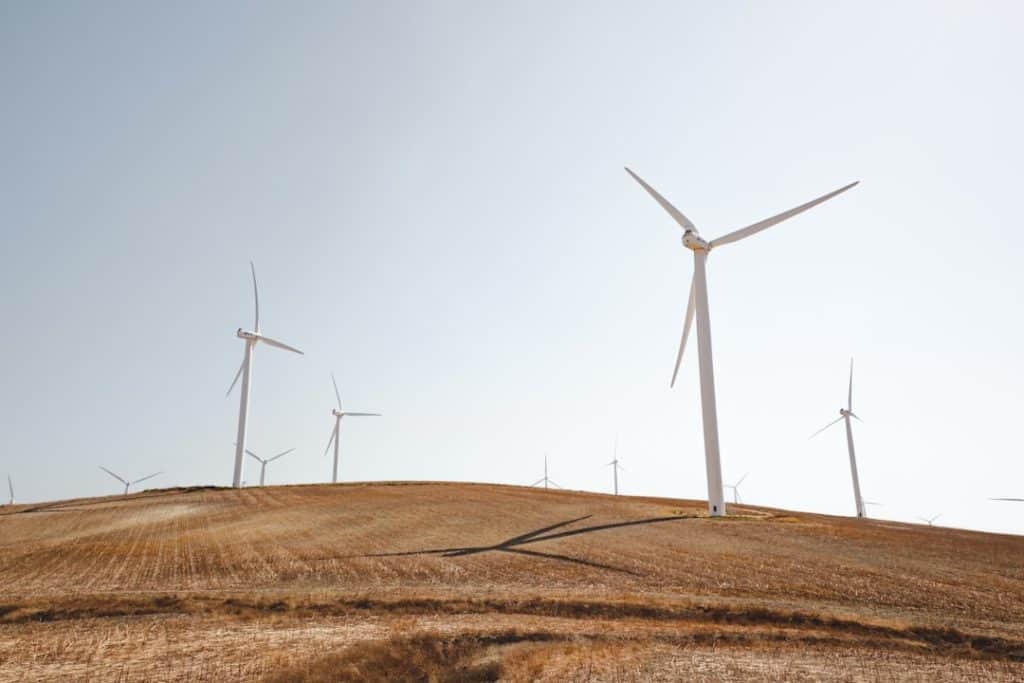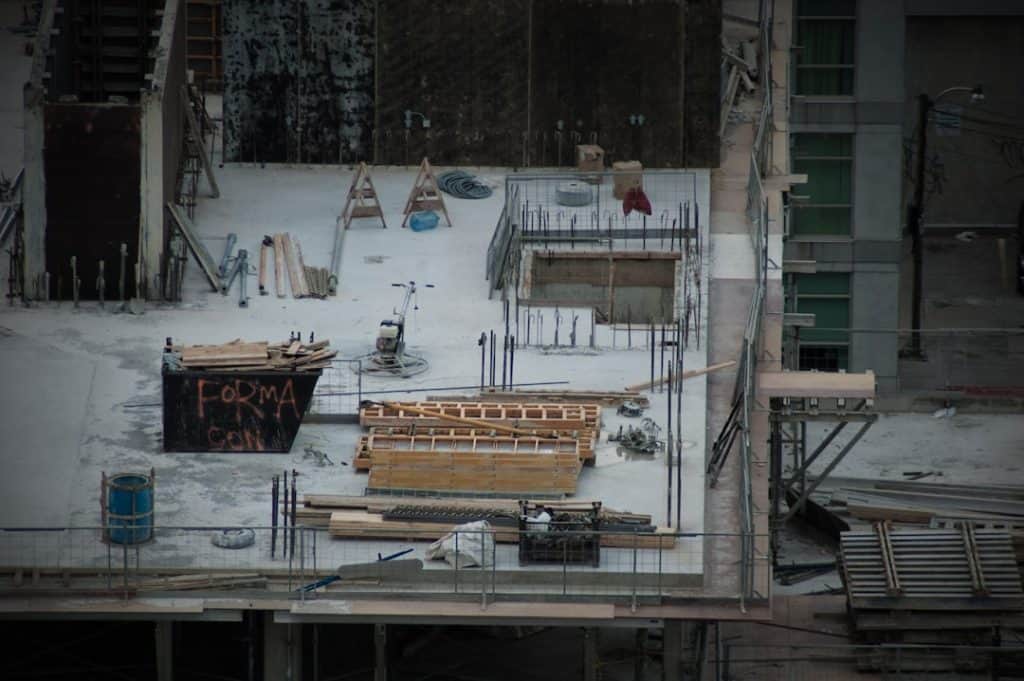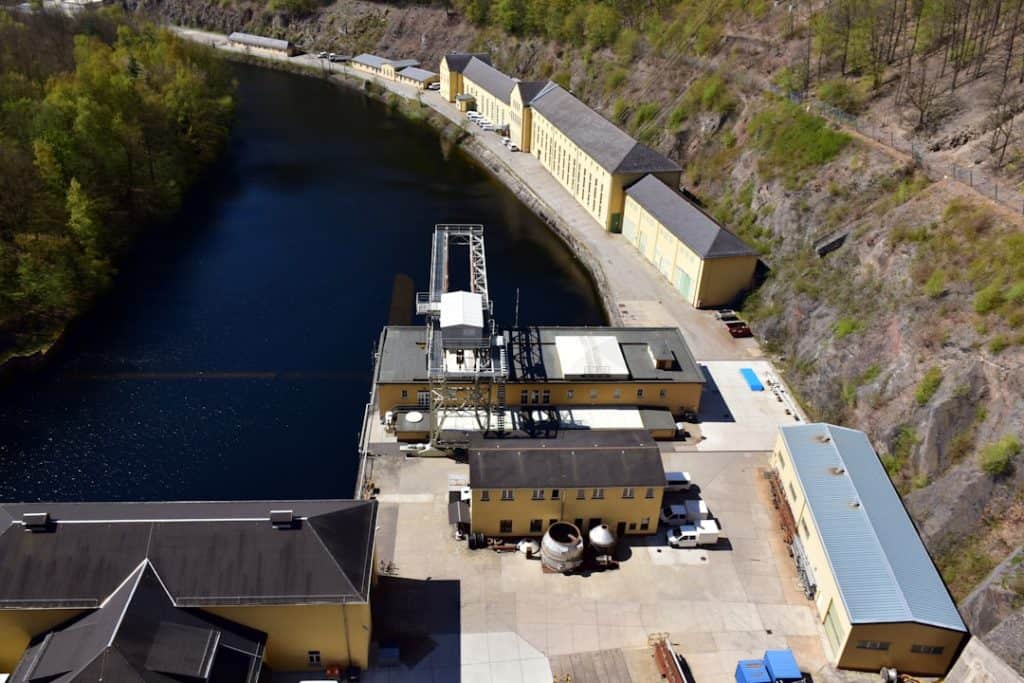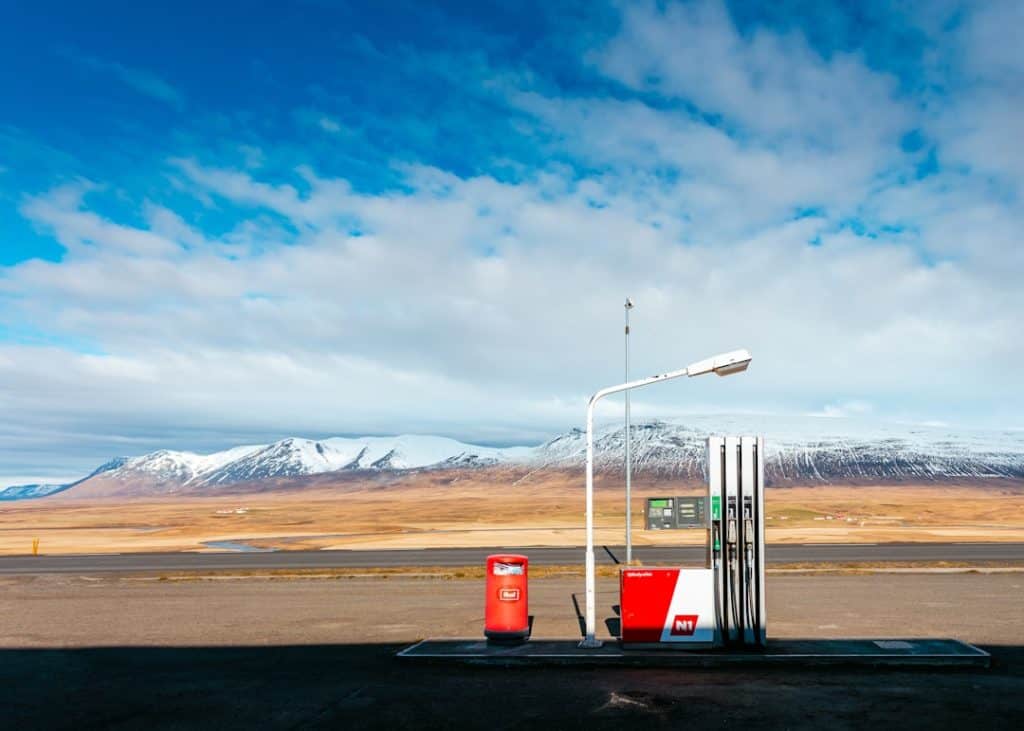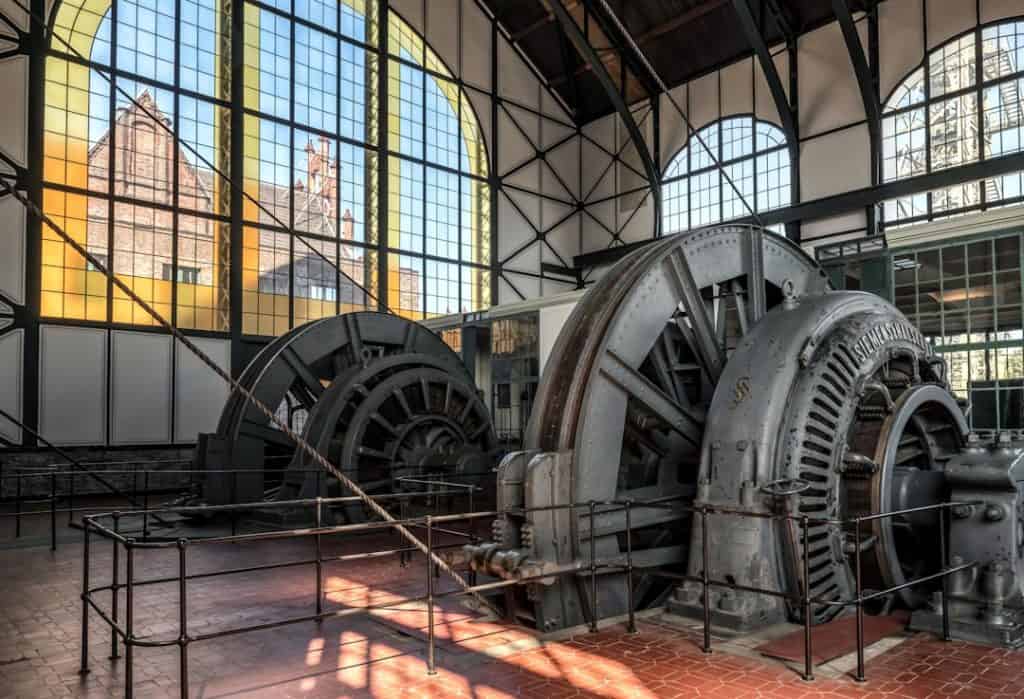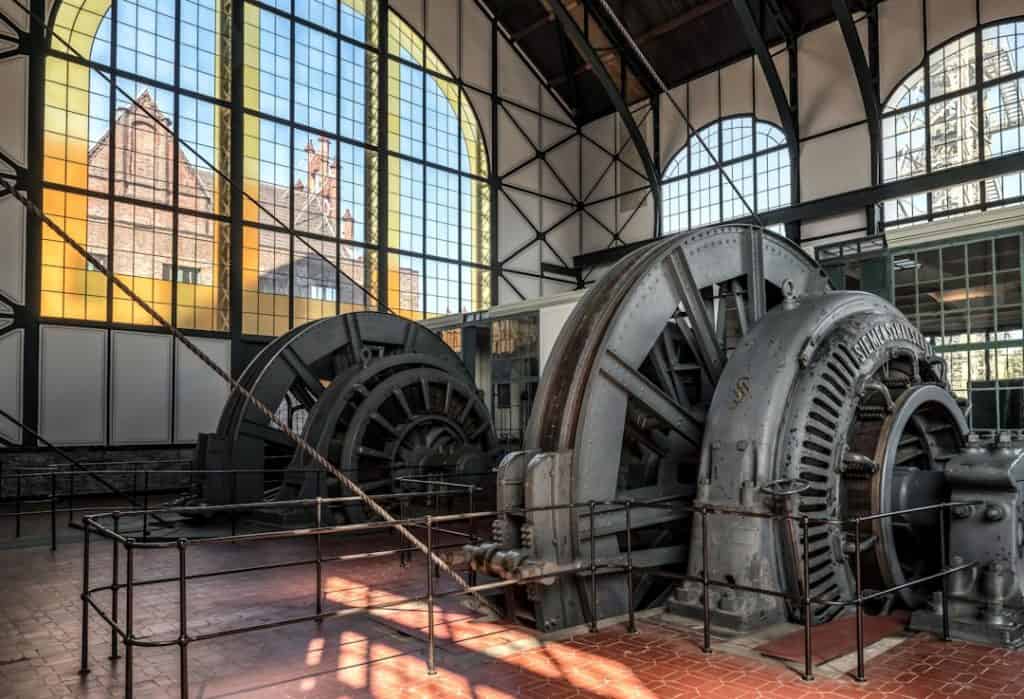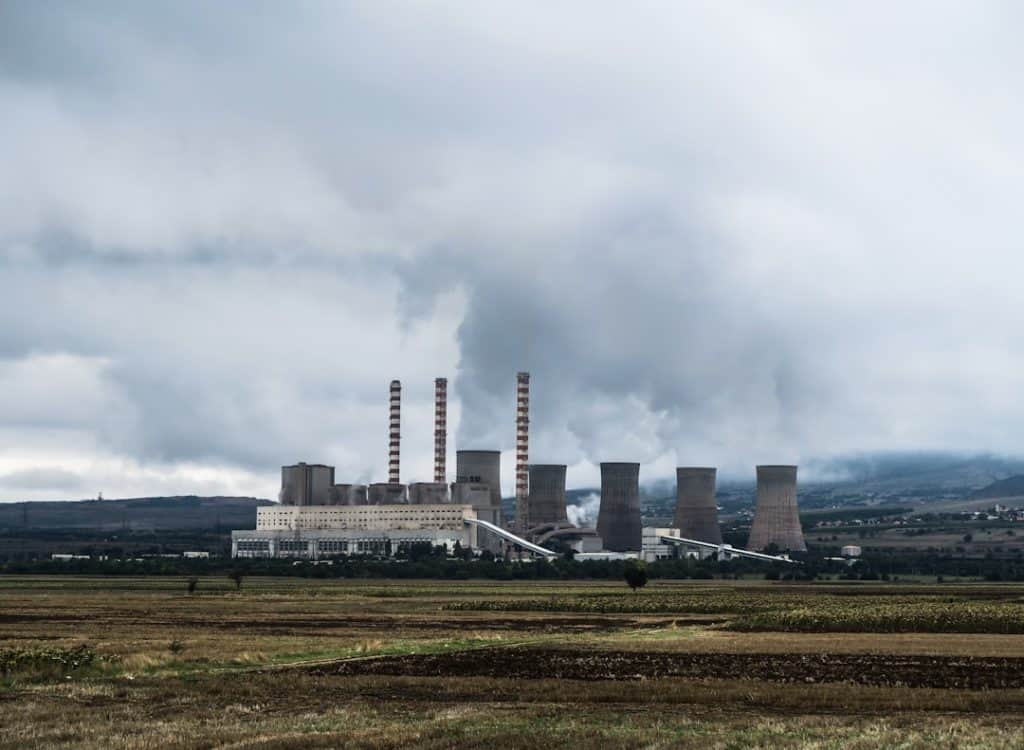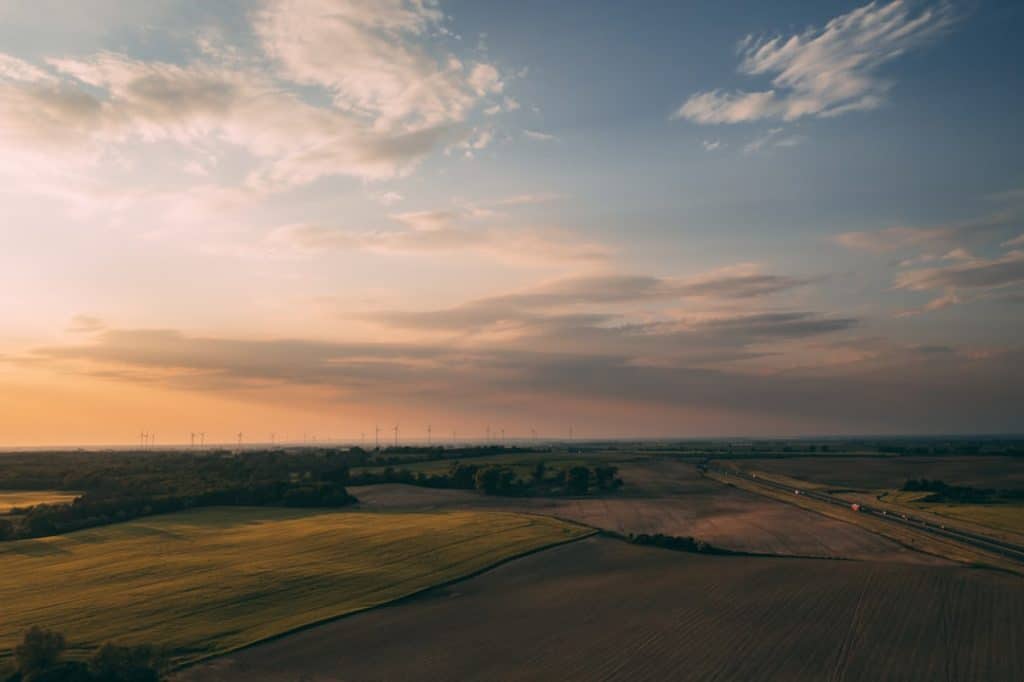A three-phase generator is an electrical generator that produces alternating current using a three-phase system. This type of aggregate is widely used in industry, construction and households where more electrical power is needed. A three-phase system consists of three alternating voltages phase-shifted by 120 degrees, which enables more efficient transmission of electricity and greater stability compared to a single-phase system.
Three-phase aggregates are available in different capacities, from several kilowatts to several megawatts. These gensets are key to providing reliable power supply for larger consumers and critical systems. They are often used in manufacturing plants, construction sites, hospitals and data centers.
Three-phase generators can power industrial machines, air conditioning systems, elevators and other equipment that requires more power. In the event of a power outage, three-phase aggregates can provide backup power for entire facilities or complexes. The advantages of three-phase aggregates include greater efficiency, the possibility of supplying larger loads, better utilization of the generator and less vibration compared to single-phase aggregates of the same power.
However, they are usually more complex to install and maintain, and require expert handling. When choosing a three-phase generator, it is important to consider factors such as required power, type of load, operating conditions and maintenance requirements.
Key Takeaways
- The three-phase unit is an electric generator that produces electricity in three phases.
- It works by using three phases of current generated within the motor to produce electricity.
- The differences between three-phase and single-phase generators include the number of phases of electricity they produce, as well as the strength and stability of the energy produced.
- It is necessary to use a three-phase aggregate when greater power and stability of electricity is needed, as is the case in industry or at larger events.
- When choosing the right three-phase generator for your needs, it is important to consider the required power, stability and efficiency of the generator.
How does the three-phase aggregate work?
The three-phase generator works on the principle of converting mechanical energy into electrical energy. The basic elements of the unit are the engine that drives the generator, which then produces electricity. A three-phase system consists of three conductors that generate electricity, which allows for greater power and stability compared to a single-phase system.
These aggregates are equipped with voltage and frequency regulators to ensure the stability and constancy of the electricity produced. One of the key characteristics of a three-phase generator is the ability to drive larger consumers and machines that require more power. These generators are designed to work continuously and provide a stable power supply even under high load conditions.
Also, the three-phase system enables an even distribution of the load, which contributes to more efficient operation of the unit.
Differences between three-phase and single-phase aggregates
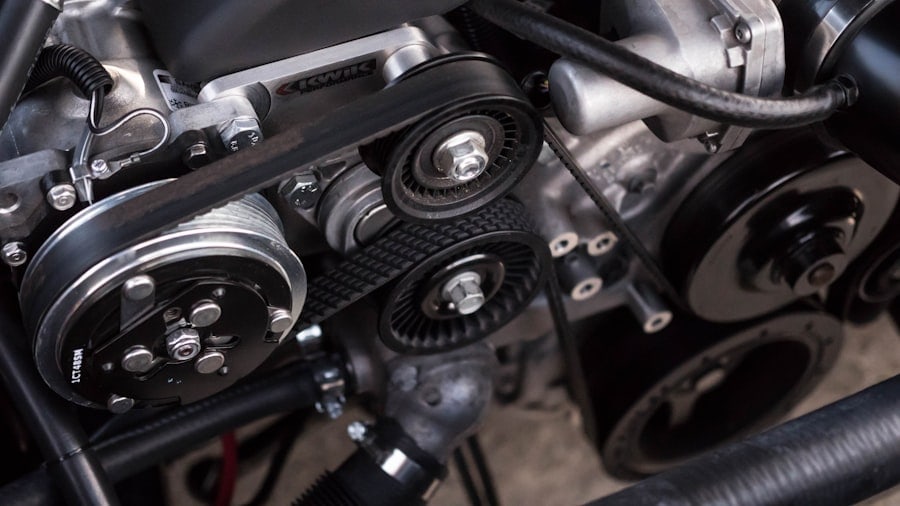
The difference between three-phase and single-phase generators lies in the way of generating electricity. While single-phase aggregates use one conductor to generate electricity, three-phase aggregates use three conductors. This allows three-phase generators to produce more power and stability compared to single-phase generators.
Also, three-phase aggregates are more suitable for starting larger machines and devices that require more power. Another important difference between these two types of aggregates is that three-phase aggregates have a more even load distribution, which contributes to more efficient operation and extends the lifetime of the aggregates. On the other hand, single-phase aggregates are more suitable for smaller consumers and less demanding machines and devices.
When is it necessary to use a three-phase aggregate?
| The situation | The reason |
|---|---|
| When a higher power supply is required | A three-phase generator can provide more power than a single-phase generator |
| When powering three-phase devices is required | A three-phase generator is necessary for powering three-phase devices such as industrial motors, air conditioners, etc. |
| When a uniform load is required | A three-phase aggregate enables an even distribution of the load on three phases, which can be important in certain situations |
Three-phase aggregates are necessary in situations where it is necessary to ensure a stable supply of electricity for larger consumers. These aggregates are often used on construction sites, factories, as well as for powering large machines and devices. Also, they can be used to power households in the event of a power outage, as they are able to start a number of devices at the same time.
In addition, three-phase aggregates are also necessary for the operation of various types of industrial equipment that require more power to be efficiently started and maintained. Also, three-phase aggregates are necessary when it is necessary to provide a stable power supply for long periods of time, such as in the case of outdoor events or temporary locations where a standard electrical grid is not available. In such situations, three-phase aggregates are crucial to ensure a continuous supply of electricity without interruption.
How to choose the right three-phase unit for your needs?
When choosing the right three-phase generator for your needs, it is important to consider several key factors. First of all, the required power of the aggregate should be considered in relation to the consumers that will be connected to it. It is important to choose a generator that can start all consumers at the same time, as well as provide enough power for their continuous operation.
Also, it is important to consider the mobility of the aggregate and its ability to be easily moved from one location to another. Depending on the purpose, it may be necessary to choose a unit that is equipped with wheels or a handle for easier moving. In addition, it is important to take into account the noise level that the generator produces during operation, especially if it will be used in urban areas where there is a noise limit.
Installation and maintenance of a three-phase unit

Correct connection and installation of aggregates
First of all, it is important to properly connect the generator to consumers in order to ensure an even load and prevent overloads. Also, care should be taken about the correct placement of the unit in order to ensure good ventilation and air flow for engine cooling.
Regular maintenance of the three-phase unit
Regular maintenance of the three-phase generator is essential to ensure its long-term and reliable operation. This includes checking the oil and fuel levels regularly, as well as cleaning the air and fuel filters.
Checking the condition of cables and connections
Also, it is important to regularly check the condition of cables and connections in order to prevent possible breakdowns or power leaks.
Advantages and disadvantages of using a three-phase aggregate
The advantages of using a three-phase generator include greater power and stability compared to a single-phase system, which makes them suitable for running larger machines and devices. Also, the three-phase system enables a more even distribution of the load, which contributes to more efficient operation of the unit. These aggregates are also necessary in situations where it is necessary to ensure a stable supply of electricity for larger consumers.
However, the disadvantages of using a three-phase generator can include larger dimensions and weight compared to a single-phase system, which can make it difficult to move and transport. Also, these aggregates can be more expensive compared to a single-phase system, which can represent an additional financial burden when purchasing. In addition, a three-phase system may require specific installations and connections to ensure proper operation, which can further increase the total cost of use.
FAQs
What are three-phase aggregates?
Three-phase aggregates are electric generators that produce three-phase electricity. This means that they have three conductors and produce electricity that is used in three-phase systems.
What are three-phase aggregates used for?
Three-phase aggregates are used to supply electricity to larger consumers, such as industrial plants, construction sites, hospitals, shopping centers and the like. They are also used as a backup source of electricity in the event of a power outage.
How do three-phase units differ from single-phase units?
The main difference between three-phase and single-phase aggregates is in the method of electricity production. Three-phase aggregates produce three-phase electricity with three conductors, while single-phase aggregates produce single-phase electricity with two conductors.
How to choose a suitable three-phase aggregate?
When choosing a three-phase generator, you should take into account the required power, working time, type of fuel, noise, size and mobility of the generator. It is also important to consider the quality of the manufacturer and the service support.

